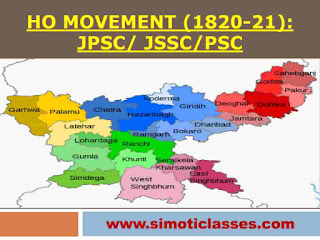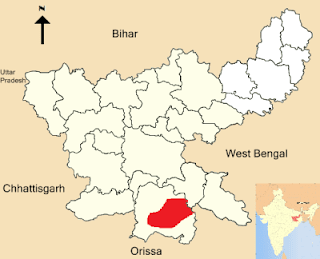Stone and Vedic Period: Jharkhand History
The history of Jharkhand dates back to the Stone Age when humans began to manufacture tools made of sharp stones to meet their needs, such as digging the soil and hunting the animals. Extensive evidence of human development in the Jharkhand region during that period has been obtained during archaeological excavations. Here tools related to the two periods of the Stone Age (East and Late Stone Age) have been found.
Ancient History of Jharkhand:
1. Early Stone Age:
During this period of the region of Jharkhand was surrounded by dense forests and the density of trees was such that nothing was clearly visible. At that time, like other places, there were such human beings, who were called semi-human or primitive men. The main tools used by them include the remains of stone axes, knives, and pieces of stone used as knives. These remains have been received from Singhbhum, Ranchi, Santhal Pargana, and Hazaribagh in the order of archaeological excavation.
2. Late Stone Age:
This period is also called the Neolithic period. Many remains of this period have been found here. Possibly when the Bronze Age culture was developing in the Indus Valley, the Neolithic culture was developing in Chotanagpur during the same period. Smooth polished stone craft tools and pottery have been found here. The main objects found here related to the Neolithic period are axes, celts, chisels, chalk, iron, and copper saws.
Another thing that is worth noting is that most of the stone tools of this period found from here are polished. Twelve (12) types of hand-crafts belonging to the Neo-Stone Age have been found in India. Almost all of these hand-crafts have been found in Chotanagpur. The remains found in the above period do not give detailed information about the history, but the evidence of the life of the primitive man and the indications of the gradual changes taking place in it.
3. Iron Age:
Iron was used in the later Vedic period. The name 'Pand' of Jharkhand is first found in the Aitareya Brahmin, the composition of the later Vedic period. A tribe found here 'Asura' is seen associating with this period. The main work of the Asura tribe has been to prepare tools by smelting iron. Therefore, it is clear from this that the Iron Age must have developed here as well.
Vedic Age:
The relation of any historical fact related to Jharkhand from the Rigveda period has not been received till now. Iron was used in the later Vedic period, due to which some tribes working in iron, especially the Asura, are discussed in the Aitareya Brahmana of the later Vedic period.
Religious Movement:
In the year 6th Century BC Jain and Buddist movements took place, which had a wide impact and the Jharkhand was no exception to this.
Buddhism:
Buddism had a profound impact on Jharkhand. Relics related to Buddhism have been found in various places in Jharkhand.
- A lion head has been found from Murtiya village (Palamu), where resembles the lion head engraved on the entrance of the Sanchi Stupa.
- A Buddhist stupa has been found in Karua village.
- Today's Dhanbad district was an important center of Buddhism. Many Buddhist monuments have been found from Diyapur-Dalmi and Boudhpur of Dhanbad, among which the Budheswar temple of Buddhapur is notable.
- A fragmentary stone Buddha statue has been found from Gholmara (near Purulia).
- A stone statue of Buddha has been found from Suryakund (near Barhi, Hazaribagh).
- A Buddha statue has been found from Balan reaching Johna Falls.
- A Buddha statue has been found in Katega village (Bano railway station, Gumla).
- Two Buddha statues have been found from Patamba village (Jamshedpur).
- The idol of Tara (Buddhist Goddess) has been found from the Ichagarh (Saraikela-Kharsawan), which is kept in Ranchi Museum.
Jainism:
Jainism also had a profound impact on Jharkhand. Nirvana of 23rd Tirthankara of Jains, Parshvanath, in 717 BC, was born on a mountain near Isri (Giridih), which was named Parsvanath/ Parasnath mountain after him. This mountain is famous as a major pilgrimage site for Jains. Manbhum (today's Dhanbad) of Chotanagpur was the center of Jain civilization and culture.
The main Jain sites of this region were;
- Pakbira, Tuisama, Deoli, Pawanpur, Palma, Arsha, Charg, Golmara, Badam, Balrampur, Karra, Para, Katras, etc.
- Some places of worship of Jains have been found in Hanumand village (near Satbarwa) of Palamu.
- The early inhabitants of Singhbhum were Jains, who were called 'Saraks'. 'Sarak' is a spoiled form of the word Sharvak. The householder of Jain faiths was called Shravak. Later the people of the Ho tribe drove them out of Singhbhum.
Previous Page:Hari Baba Movement (1930): JPSC/ JSSC/ PSC
Next Page:Maurya and Post-Maurya Period: Jharkhand History- JPSC/ JSSC/ PSC































